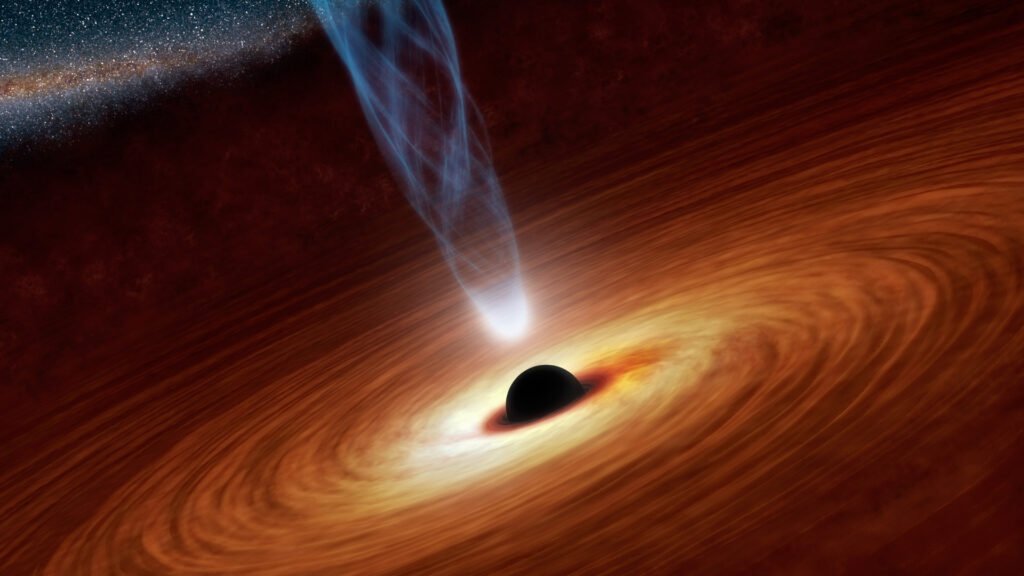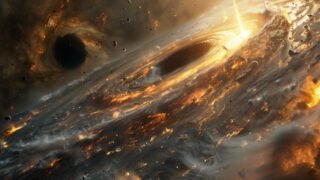Black holes are among the most fascinating and mysterious objects in the universe. They are regions in space where gravity is so strong that nothing, not even light, can escape their pull. But how are black holes created? What processes lead to their formation? In this article, we will explore the different ways black holes are formed, the types of black holes that exist, and the science behind their incredible power. Whether you’re a student, an enthusiast, or just curious about the cosmos, this article will provide you with a detailed understanding of how black holes are created.

Frequently Asked Questions
What is a Black Hole?
A black hole is formed when a massive amount of matter is compressed into a very small space, creating a region where the gravitational pull is so strong that even light cannot escape. Black holes are invisible because no light can leave them, making them detectable only through their interaction with surrounding matter. However, the key to understanding black holes lies in their formation process.

The Life Cycle of Stars: The Birthplace of Black Holes
To understand how black holes are created, we need to begin with the life cycle of stars. Stars are massive spheres of burning gas, primarily hydrogen and helium, that produce energy through nuclear fusion. This process generates immense pressure that counteracts the inward pull of gravity, keeping the star stable for millions or even billions of years.
However, this balance between fusion pressure and gravitational forces is not eternal. Stars have a finite amount of fuel, and once they run out of nuclear fuel, their fate is determined by their mass. This is the crucial factor that decides whether a star will end up as a white dwarf, a neutron star, or a black hole.
Stellar Black Holes: The Collapse of Massive Stars
The most common way black holes are formed is through the collapse of massive stars. When a star with a mass greater than about 20 times that of the Sun reaches the end of its life, it undergoes a supernova explosion. During this explosion, the outer layers of the star are blown away, but the core, which has no fuel left to burn, collapses under its own gravity.
At this stage, if the core’s mass is more than about three times the mass of the Sun, no known force can stop the collapse. The core continues to shrink until it forms a singularity—a point in space with infinite density and zero volume. This singularity is surrounded by an event horizon, the boundary beyond which nothing can escape the black hole’s gravitational pull. This is how stellar black holes are created.

Supermassive Black Holes: The Giants at the Center of Galaxies
Supermassive black holes are much larger than stellar black holes, with masses ranging from millions to billions of times that of the Sun. These black holes are typically found at the centers of galaxies, including our own Milky Way, where the supermassive black hole Sagittarius A* resides.
The exact formation process of supermassive black holes is still a topic of ongoing research, but scientists have several theories. One theory suggests that they form through the merging of smaller black holes over time. Another hypothesis is that they are formed from the collapse of massive clouds of gas in the early universe, bypassing the star stage entirely. Regardless of their origin, supermassive black holes play a crucial role in the formation and evolution of galaxies.
Intermediate Black Holes: The Missing Link?
Intermediate black holes are thought to be the “missing link” between stellar black holes and supermassive black holes. These black holes have masses between 100 and 100,000 times that of the Sun. While fewer of these black holes have been observed, their formation is likely the result of the collision and merging of smaller black holes. Some theories also suggest that they could form in dense star clusters, where multiple stars collapse together.

Primordial Black Holes: A Hypothetical Beginning
Primordial black holes are hypothetical black holes that are thought to have formed in the early universe, shortly after the Big Bang. Unlike stellar and supermassive black holes, which form from the collapse of stars or gas clouds, primordial black holes would have formed from the high-density fluctuations present in the early universe.
If these black holes exist, they would provide valuable insights into the conditions of the early universe and the nature of dark matter. However, detecting primordial black holes has proven to be incredibly challenging, and their existence remains speculative.
The Role of Gravity and General Relativity
The creation of black holes is deeply connected to the laws of gravity and Einstein’s theory of general relativity. According to general relativity, massive objects curve spacetime, and the more massive an object, the greater the curvature. When a massive star collapses to form a black hole, it warps spacetime to such an extreme degree that it creates a singularity—an infinitely dense point where the known laws of physics break down.
This warping of spacetime is what causes the intense gravitational pull of a black hole. The event horizon marks the point where the curvature becomes so extreme that not even light can escape. Outside the event horizon, however, black holes can still influence their surroundings by pulling in matter and bending light, a phenomenon known as gravitational lensing.

Observing Black Holes: How Do We Know They Exist?
Although black holes are invisible, scientists have developed several methods to detect their presence. One of the most common methods is through the observation of X-rays emitted by gas and matter being pulled into the black hole. As this matter accelerates and heats up, it releases high-energy radiation that can be detected by telescopes.
Gravitational waves are another tool used to detect black holes. When two black holes merge, they produce ripples in spacetime that can be detected by instruments like LIGO (Laser Interferometer Gravitational-Wave Observatory). These waves provide direct evidence of black holes and have opened up new avenues of research into their properties.
Conclusion: The Ongoing Mystery of Black Holes
Black holes are among the most mysterious and intriguing objects in the universe. From stellar black holes formed by the collapse of massive stars to the supermassive giants at the centers of galaxies, their formation is a testament to the power of gravity and the complex processes at play in the cosmos.
While we have made significant progress in understanding how black holes are created, many questions remain unanswered. The formation of supermassive and primordial black holes, in particular, is an area of active research. As our observational technology improves, we may one day unlock the full secrets of these enigmatic objects.
References:
- NASA: What Is a Black Hole?
- European Space Agency (ESA): The Formation of Black Holes
- Harvard-Smithsonian Center for Astrophysics: Stellar Black Holes
- Einstein’s Theory of General Relativity – Explained by MIT
- Space.com: How Are Black Holes Created?
- LIGO: Gravitational Waves and Black Holes











Leave a Comment